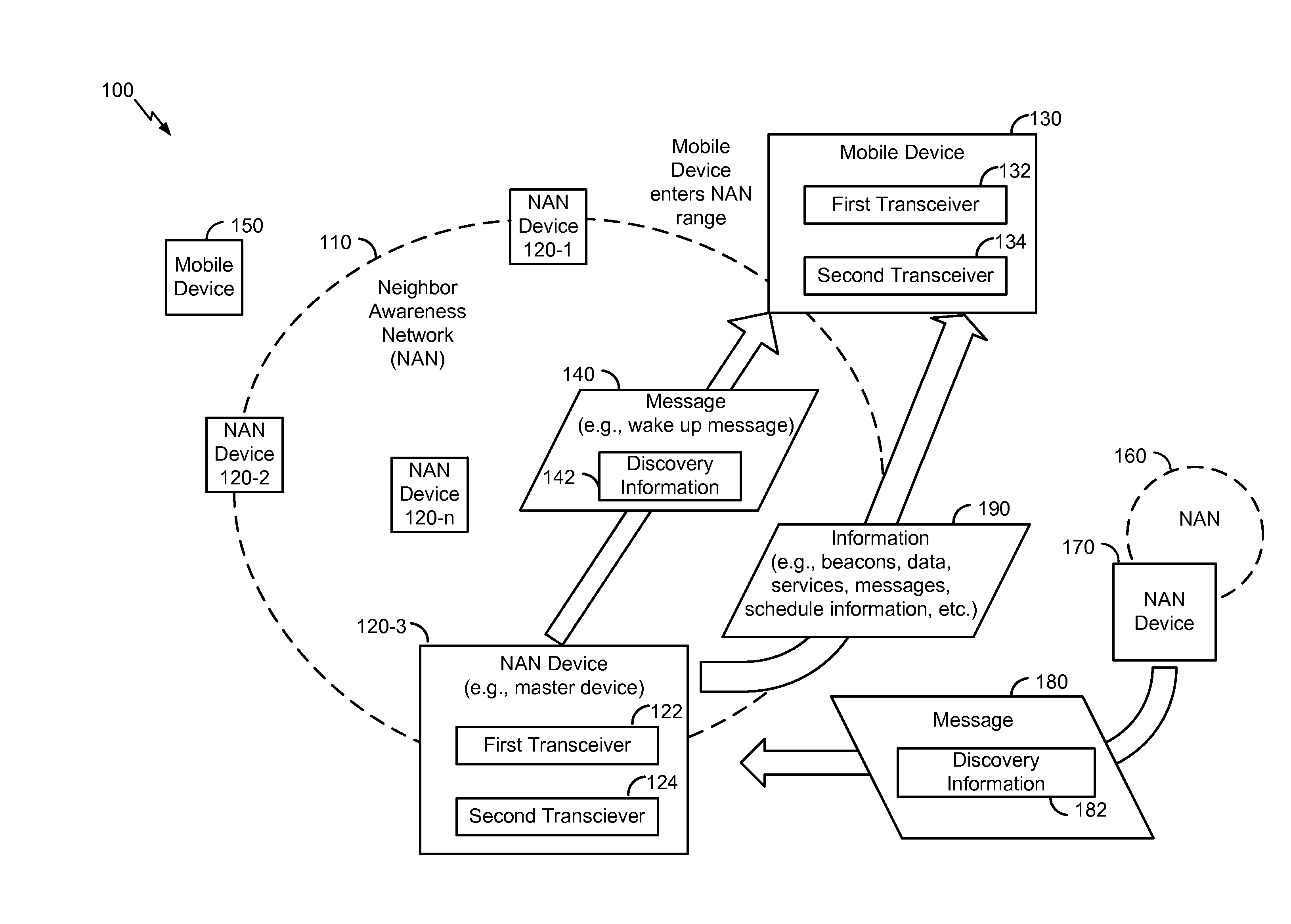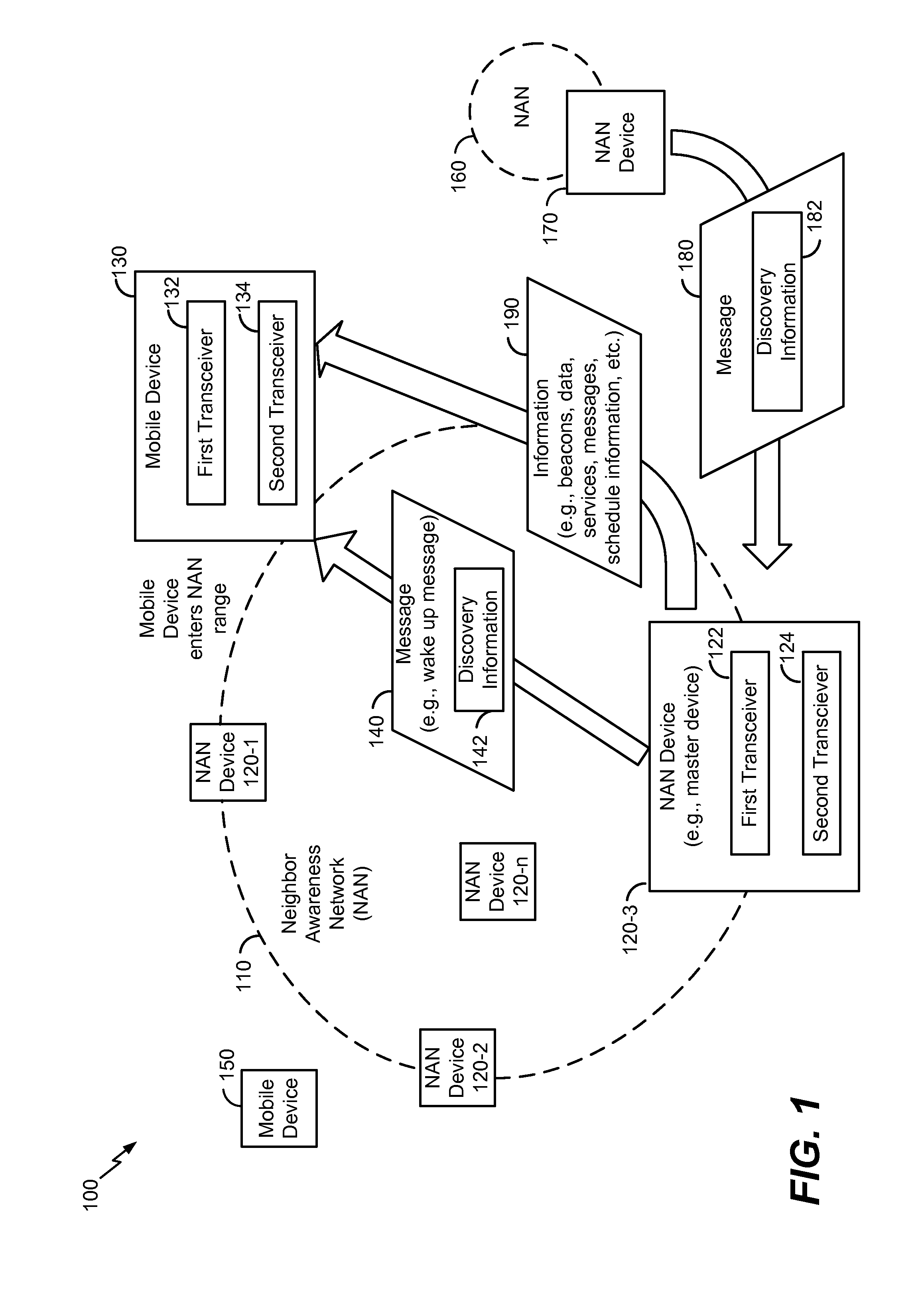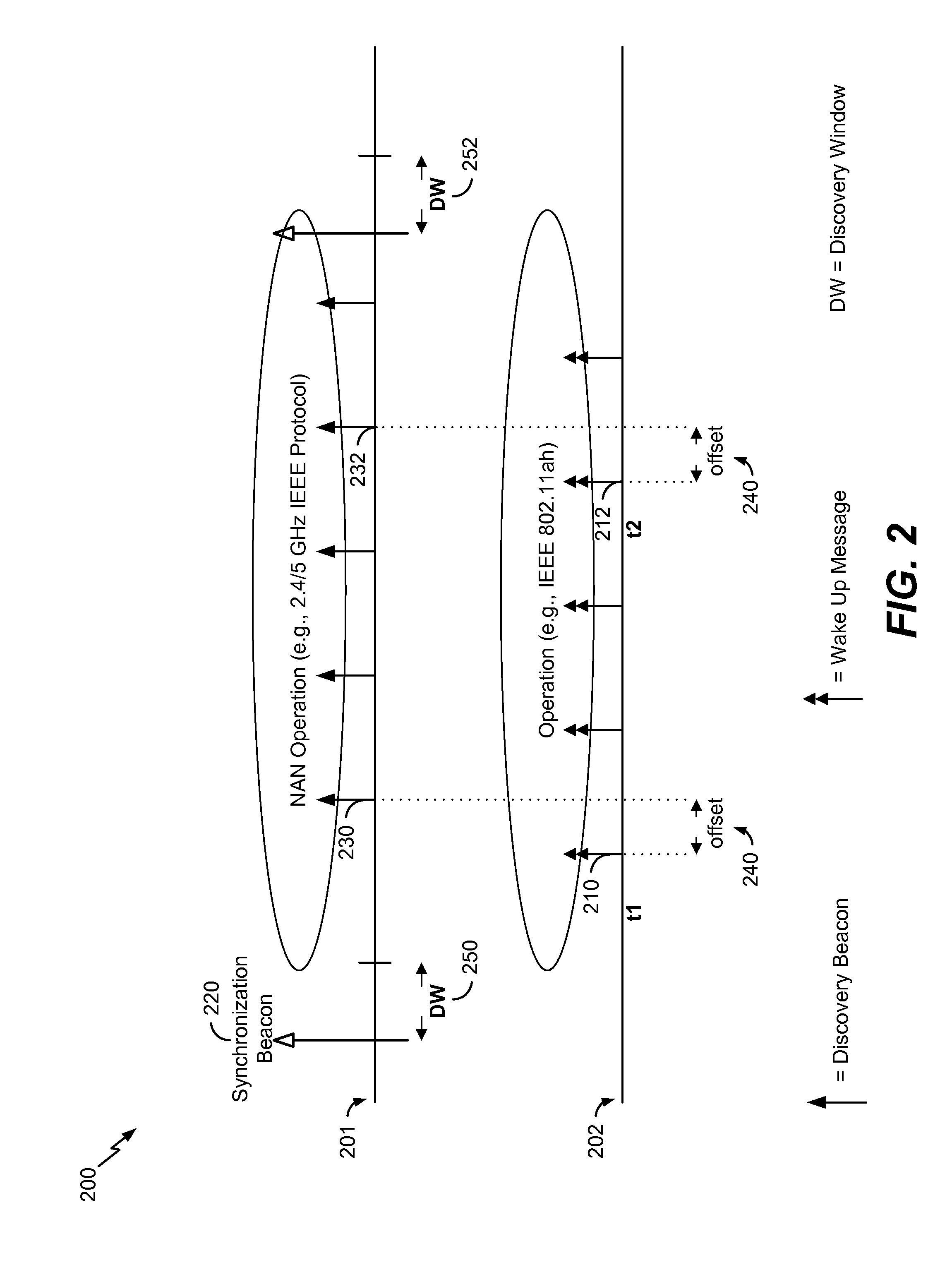Discovery of a neighbor awareness network (NAN) using a wake up message
a neighbor awareness and wake-up message technology, applied in the field of discovery of neighbor awareness networks, can solve the problems of consuming a large amount of power, consuming time, and power consumption of mobile electronic devices, and achieve the effects of reducing power consumption, less power, and reducing power consumption
- Summary
- Abstract
- Description
- Claims
- Application Information
AI Technical Summary
Benefits of technology
Problems solved by technology
Method used
Image
Examples
first embodiment
[0056]FIG. 2 illustrates a NAN discovery process and is generally designated 200. In FIG. 2, NAN operation is illustrated along a first horizontal axis 201 and operation resulting in low power consumption at a device (e.g., operation associated with an IEEE 802.11ah wireless protocol) is illustrated along a second horizontal axis 202. From left-to-right, the horizontal axes 201, 202 represent time. The operations described with reference to FIG. 2 may be performed in connection with the NAN 110 of FIG. 1.
[0057]As shown in FIG. 2, one or more NAN devices (e.g., any of the NAN devices 120 of FIG. 1) may periodically transmit wake up messages via a low power consuming device (e.g., the first transceiver 122) associated with a first wireless protocol, such as the first wireless protocol described with reference to FIG. 1. In some cases, the wake up messages may be transmitted by a master device of the NAN 110. As an illustrative example, the NAN device 120-3 may function as the master d...
second embodiment
[0061]FIG. 3 illustrates a NAN discovery process and is generally designated 300. The operations described with reference to FIG. 3 may be performed in connection with the NAN 110 of FIG. 1. In FIG. 3, wake up messages are transmitted at a “known” time offset 340 prior to the start of a discovery window (e.g., instead of at a “known” time offset prior to a discovery beacon, such as in FIG. 2).
[0062]For example, a first wake up message 310 may be transmitted by one of the NAN devices 120 (e.g., by the NAN device 120-3) at the “known” time offset 340 prior to the start of a first discovery window 250. Similarly, a second wake up message 312 may be transmitted by one of the NAN devices 120 (e.g., by the NAN device 120-3) at the “known” time offset 340 prior to the start of the discovery window 252. One or both of the wake up messages 310, 312 may have one or more features corresponding to the message 140 of FIG. 1. One or both of the wake up messages 310, 312 may be transmitted in acco...
third embodiment
[0064]FIG. 4 illustrates a NAN discovery process and is generally designated 400. The operations described with reference to FIG. 3 may be performed in connection with the NAN 110 of FIG. 1. In contrast with FIG. 3, in FIG. 4, NAN devices (e.g., the NAN devices 120 of FIG. 1) avoid transmitting discovery beacons, as shown at 402. Newly arriving devices (e.g., the mobile device 130) may utilize the wake up messages 310, 312 to determine when the next discovery window 250, 252 will occur without use of discovery beacons. Reducing or eliminating the transmission of discovery beacons as in FIG. 4, may reduce communications transmitted using the NAN 110 and may reduce power consumption by NAN devices.
[0065]When performing network discovery, the mobile device 130 may engage in “passive” scanning or “active” scanning. In passive scanning (e.g., as described with reference to FIGS. 1-4), the mobile device 130 may “listen” or “wait” for a message (e.g., the message 140) that is transmitted v...
PUM
 Login to View More
Login to View More Abstract
Description
Claims
Application Information
 Login to View More
Login to View More - R&D
- Intellectual Property
- Life Sciences
- Materials
- Tech Scout
- Unparalleled Data Quality
- Higher Quality Content
- 60% Fewer Hallucinations
Browse by: Latest US Patents, China's latest patents, Technical Efficacy Thesaurus, Application Domain, Technology Topic, Popular Technical Reports.
© 2025 PatSnap. All rights reserved.Legal|Privacy policy|Modern Slavery Act Transparency Statement|Sitemap|About US| Contact US: help@patsnap.com



